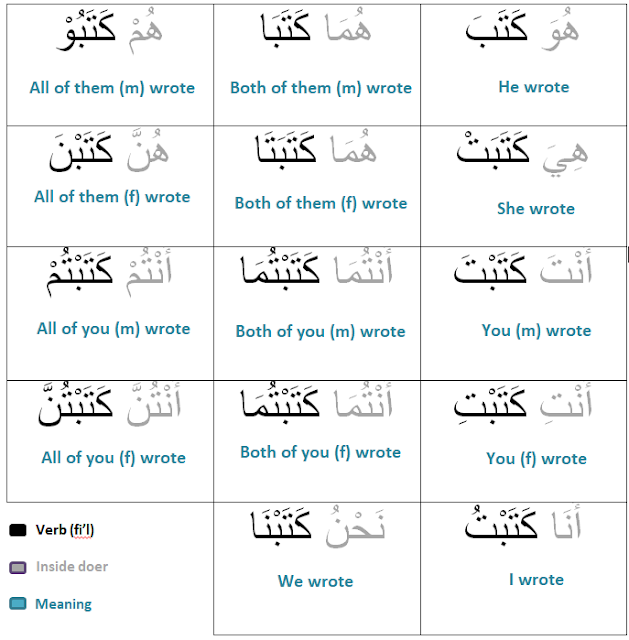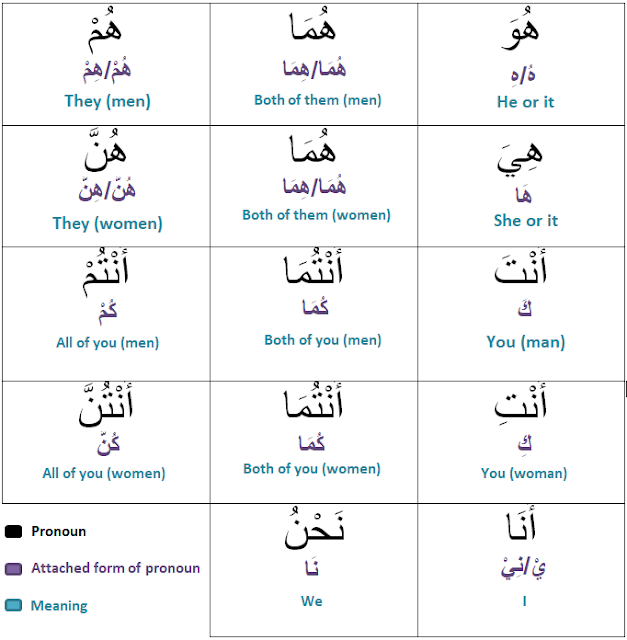Arabic past tense - fi'l maadhee
The chart
above shows the usual pattern of words used in the past tense of the Arabic
language. When we use past tense in English, the verb will usually come with a
pronoun. For example, ‘he slept’, ‘she helped’, ‘they came’
etc…But the Arabic language has this cool thing where you can say just the verb
and it will have the pronoun hidden in it. The words in grey show the hidden
pronoun in each word.
So for
example if you say كَتَبَ, that by itself would mean ‘he
wrote’. If you say نَصَرَ that would mean ‘he helped’.
It depends on the pattern of the word. Hence it is helpful to memorize this
chart and be familiar with the pattern. So that when you see for instance a
word like كَتَبْنَا you would be able to recognize
that the hidden pronoun is نَحْنُ
and translate it as ‘we wrote.’
Moreover, if
you are familiar with the pattern of this chart, you will be able to recite the
pattern for any word given. For example if I say نَصَرَ
you would be able to recite and know the all the meanings in the whole chart as
‘huwa nasara’ (he helped), ‘humaa nasaraa’ (both of them (m) helped), ‘hum
nasaroo’ (they (m) helped) and so on.
Mental
exercise:
Recite the
past tense chart for the following words and think of the words’ meanings. Read each word, say the meaning and then say
the next word.
نَصَرَ (he helped)
جَعَلَ (he made)
سَمِعَ (he listened)
*Lesson based on 'Arabic with Husna' by Ustadh Nouman
*******************************************************************


Good website
ReplyDelete